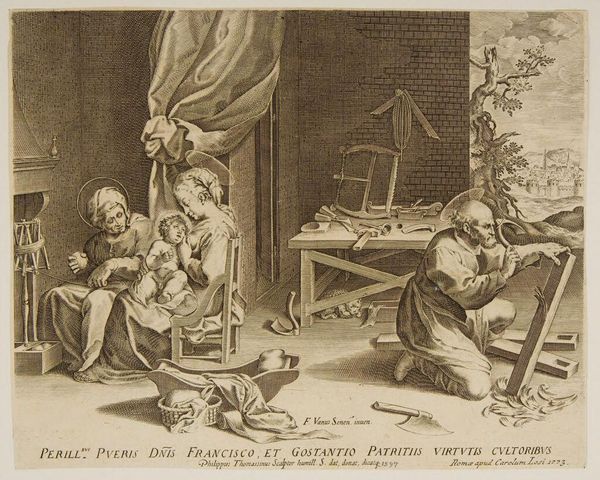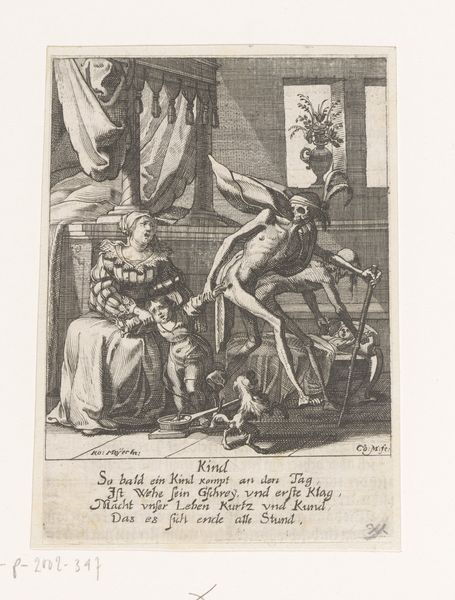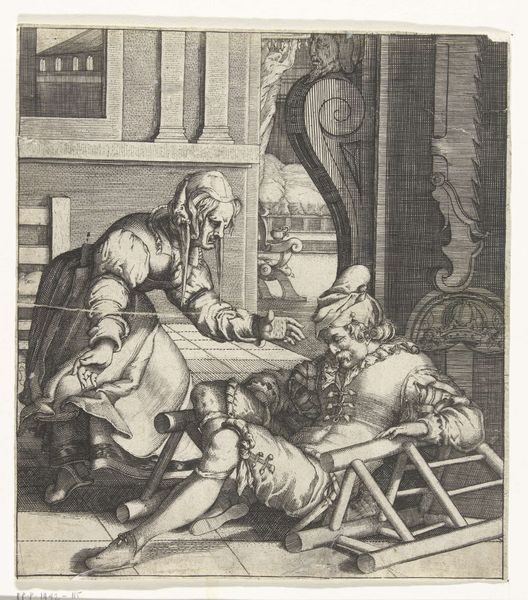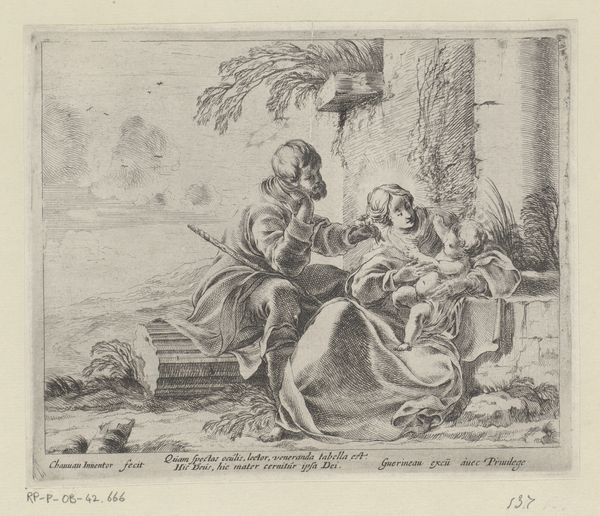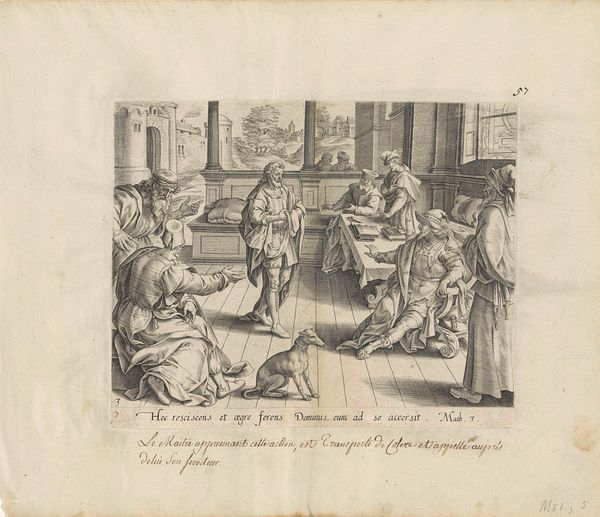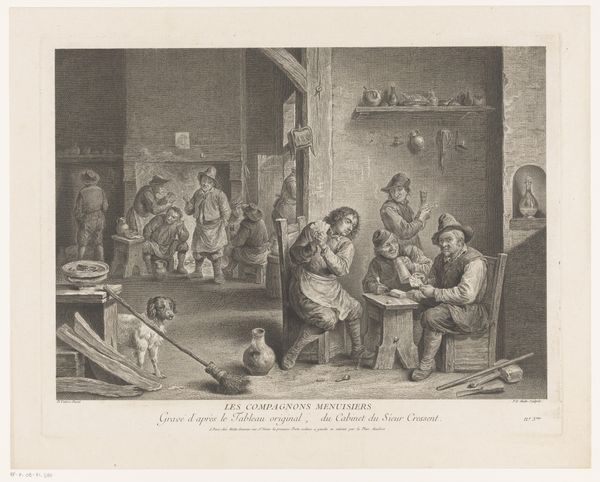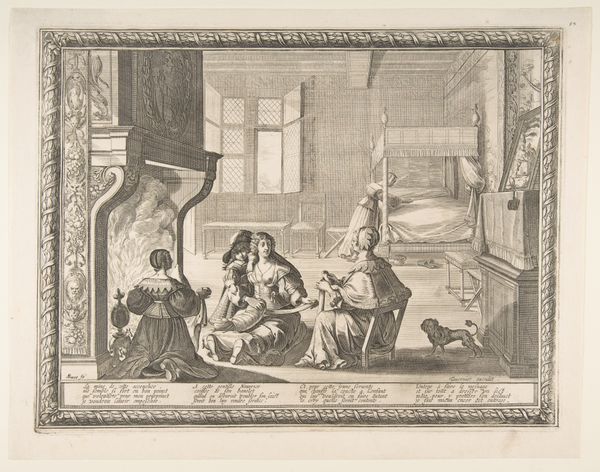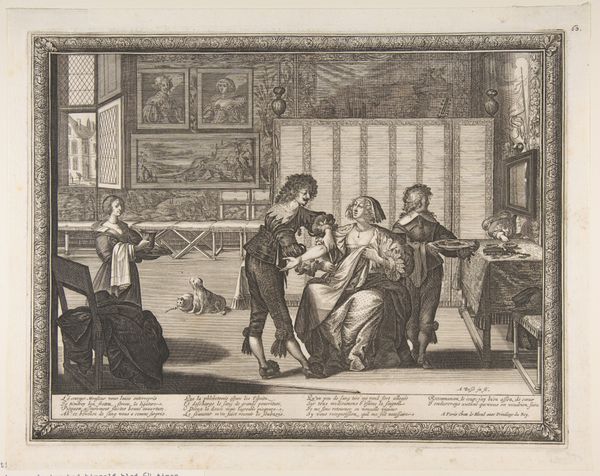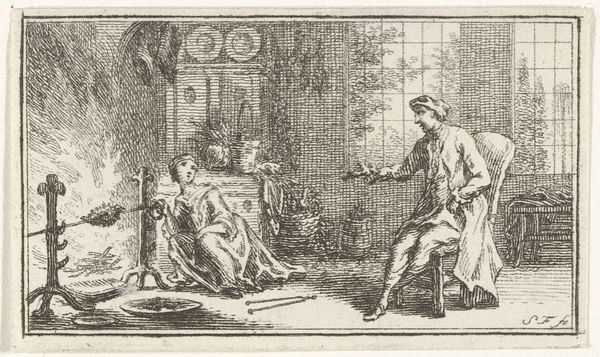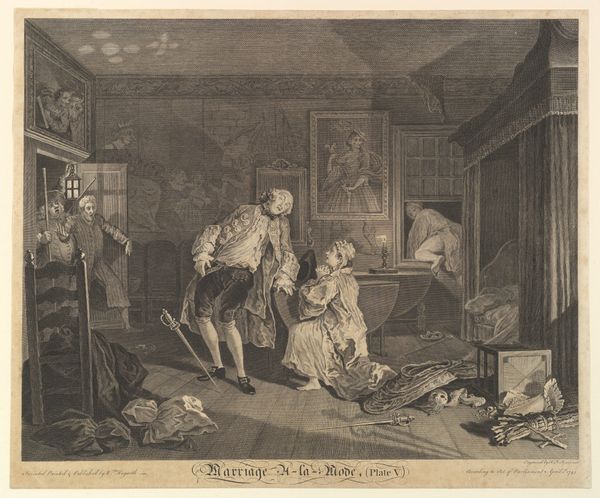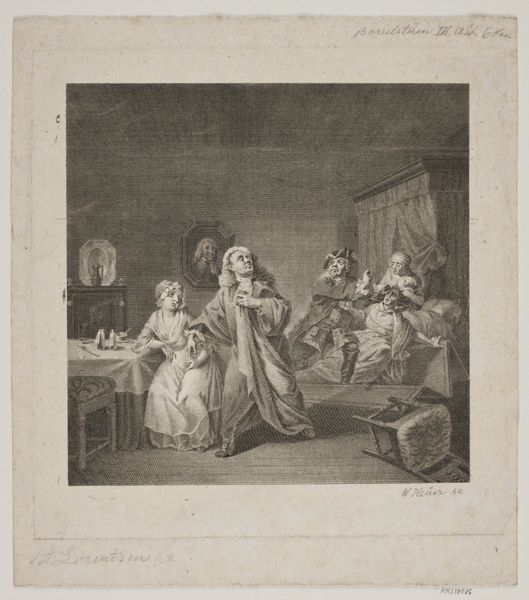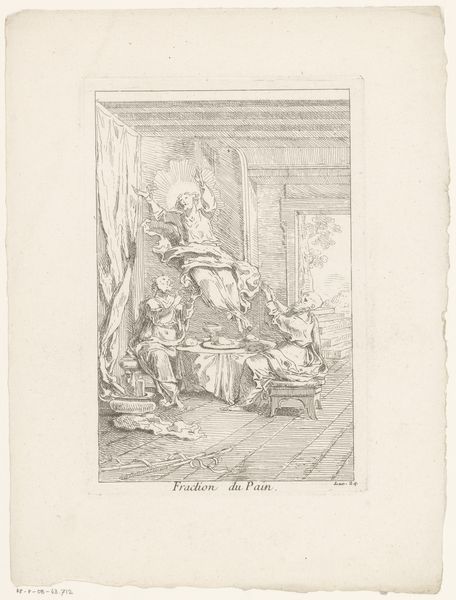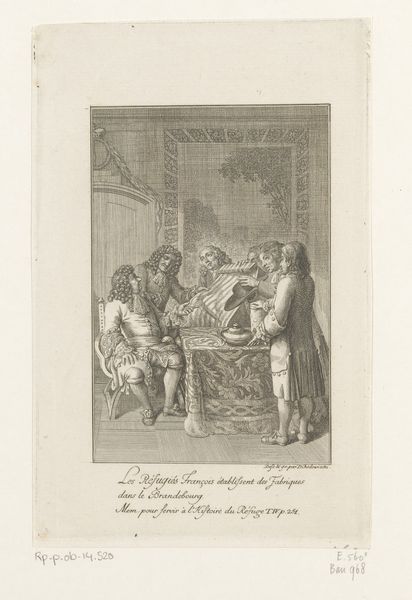
print, engraving
#
portrait
# print
#
landscape
#
figuration
#
genre-painting
#
history-painting
#
italian-renaissance
#
engraving
Dimensions: height 225 mm, width 275 mm
Copyright: Rijks Museum: Open Domain
Curator: Philippe Thomassin's "Heilige Familie," created in 1597 and held at the Rijksmuseum, presents a domestic scene rendered as an engraving. My first impression is the detailed interplay between the family and the landscape visible through the open structure. Editor: It’s the sheer volume of things for me; this interior speaks volumes about labour, production and daily routines. It goes beyond depicting the Holy Family. Look at all these details – the tools scattered around, the textile production, all hinting at various modes of fabrication. It seems to blur distinctions between high religious art and the toil of crafting everyday objects. Curator: Absolutely, the inclusion of those crafting implements disrupts the traditionally idealized portrayal. Consider how Thomassin subtly weaves together narratives of spirituality, craft, and class. There’s Joseph the carpenter absorbed in woodworking, Mary caring for the child, while Anne, Christ’s grandmother, busies herself with a spindle; all of it emphasizes their reliance on self-made artisanal goods within the context of an increasingly market-driven Italian Renaissance. Editor: This positioning encourages us to investigate not just what is represented, but how these narratives relate to issues such as gendered labor. Anne’s work with the spindle and thread becomes interesting when we realize these roles have been devalued when contrasted with the tools used to build structures from the ground up. Thomassin reveals how certain labour activities and gender identities were ranked within societal value systems of the time. Curator: Fascinatingly put! While the visual space occupied by Joseph suggests significance through active construction, women in turn occupy a softer space dedicated primarily to home care – reflecting broader beliefs. These nuances illustrate Thomassin's sophisticated capacity for constructing intricate layers concerning religion and familial roles shaped by existing traditions Editor: Indeed, it is a perfect bridge. Looking at what is visible, how it was manufactured reveals social stratifications regarding access to capital goods – the availability of tools for men compared to expectations toward homemaking skills amongst the woman reveals not only what materials or devices can shape identities but those practices influence both community ideals surrounding roles expected of people depending gender constructs from any given social fabric at particular moments of civilization such those happening when viewing "Heilige Familie". Curator: I find myself reflecting on how a seemingly classic depiction offers such profound engagement thanks entirely towards intricate execution combined sophisticated interpretation social factors shaped during era; there's such brilliance throughout – every single feature serves both expressive religious dedication all while representing critical views within context human history – Thomassin effectively immortalizes them across paper which prompts us contemplate connections today between meaning past representations versus its ongoing consequences experienced. Editor: This experience has enriched appreciation and reflection when thinking beyond simple aesthetics instead delve material processes employed in constructing society where everyone lives based cultural ideologies influencing perceptions within each piece crafted so far… "Heilige Familie", by Thomassem really invites a second even longer reflection now on human ingenuity, beliefs combined challenges throughout creation, progress while existing even amongst such profound questions!
Comments
No comments
Be the first to comment and join the conversation on the ultimate creative platform.
